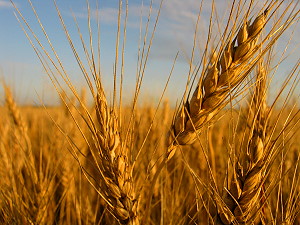 Northwest Region Crop Report Prepared by: Manitoba Agriculture, Food and Rural Initiatives GO Teams & Crops Knowledge Centre September 3, 2013 |
Northwest Region Crop Report Prepared by: Manitoba Agriculture, Food and Rural Initiatives GO Teams & Crops Knowledge Centre September 3, 2013 |
Northwest Region
Above normal daytime temperatures, higher humidity levels, and moderate winds continued throughout the Northwest Region. During the midweek period, heavy morning fogs, cloudy conditions and occasional light, scattered rain showers affected most of the area. Soil moisture remains sufficient in most areas to enable remaining later crops to mature and fill adequately.
Regionally, 90% of spring cereals acres are mature while 75% of canola acres are also mature. Preharvest herbicide treatments are continuing. An estimated 65% of canola acres are in swath, with 15% of spring wheat acres in swath and another 50% ready for straight combining. Combining of wheat, oats and canola is completed on approximately 5% of total acres. Expected yield ranges from 35 to 65 bu/acre for spring wheat, upwards of 100 bu/acre for oats and 35 to 50 bu/acre for canola. Soybeans continue to show sector variability in maturity levels and yield potentials. In the Ste. Rose area, soybean fields are mostly at R6 stage with some at R7; overall condition is rated as fair to excellent. More crop variability exists in Dauphin and Fork River sector, while soybeans in the Grandview and Gilbert Plains area are less advanced at the R5 stage.
With canola reaching maturity, sclerotinia is more evident; frequency levels however appear to be average. Some concern of ergot in cereals is reported in the Roblin area.
Second cut hay harvest is mostly completed under favorable conditions; yields are average with quality above average. Greenfeed harvest is also underway. The native hay harvest continues as more fields are accessible. Yields are average to below average and quality has improved slightly under favourable weather conditions. Supplies of hay and greenfeed are expected to be 25% short at The Pas and other early season moisture, impacted sectors. As cereal harvest progresses, straw is baled, removed and fall field work is done. Available straw supplies should meet area requirements, except for The Pas. Pastures are drying. Dugout water levels are declining but still adequate in all areas.
